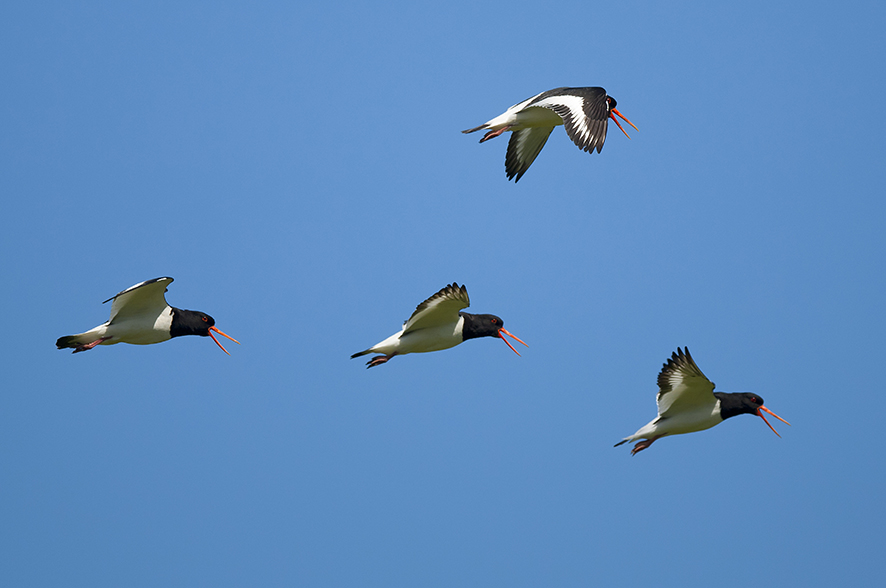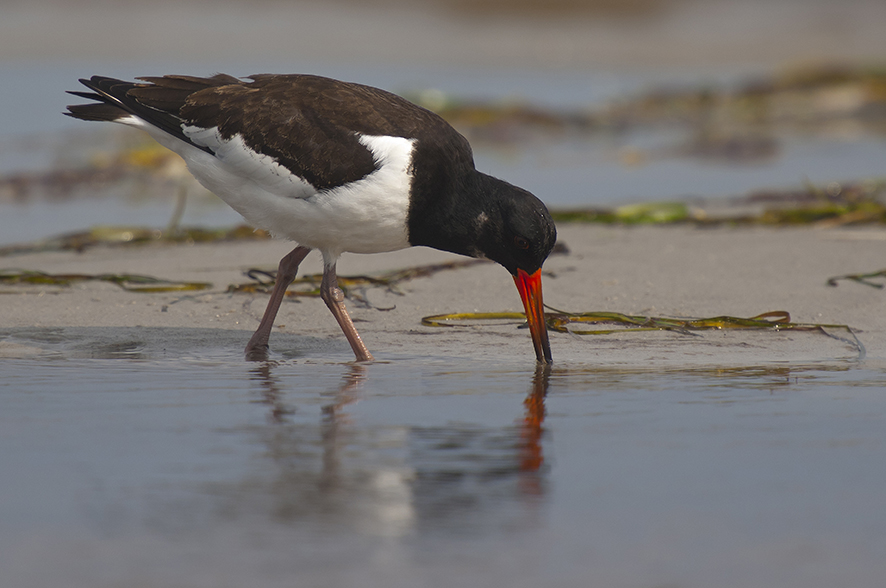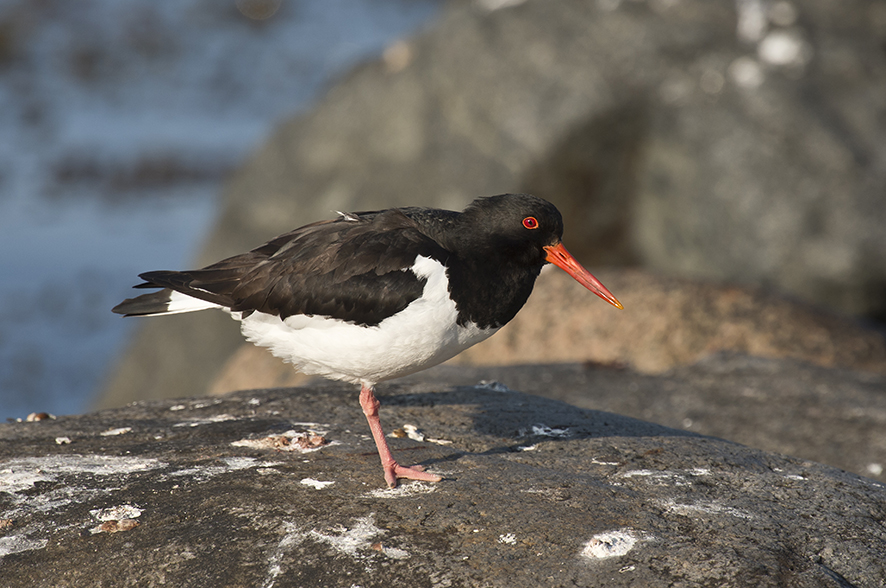Oyster catcher
- ”The oyster catcher ” eats mussels

The English name ”Oyster catcher” alludes to the fact that it should live off oysters. In reality, however, mussels are actually one of its preferred types of food. Its long red beak is well-suited for drilling down into the mud after mussels such as cockles, which live buried in sand and mud. The blue mussel, which forms large mussel beds on the seabed, is also on the oyster catcher’s menu of favourite foods. The invasive pacific oyster, now spreading in the Wadden Sea area, can be a threat to the mussel beds where the oyster catcher goes foraging for food. The bird's beaks are specially adapted to open mussels, but the thick oyster shells are problematic. The Wadden Sea's unique nature, with the large tidal flats that are covered by water at high tide and dry at low tide, offers an ideal food supply for the oyster catcher. This is where you will find the country's largest population of breeding birds. During the migration period, the Wadden Sea is visited by thousands of north Scandinavian oyster catchers, of which more than 20,000 may stay in the area during mild winters.

Facts
The oyster catcher is a large wading bird with a length of 43 cm and a wingspan of 80-86 cm. It is easily recognised by the black and white colours, which it has in common with the common magpie. The oyster catcher is a typical coastal bird that uses its long red beak to catch worms, crustaceans and mussels. However, it can also be found further inland, where it catches earthworms and insect larvae. The oyster catcher nests along European coasts. In Denmark there are 7,000-8,000 breeding pairs, where tidal meadows are their preferred breeding ground.


